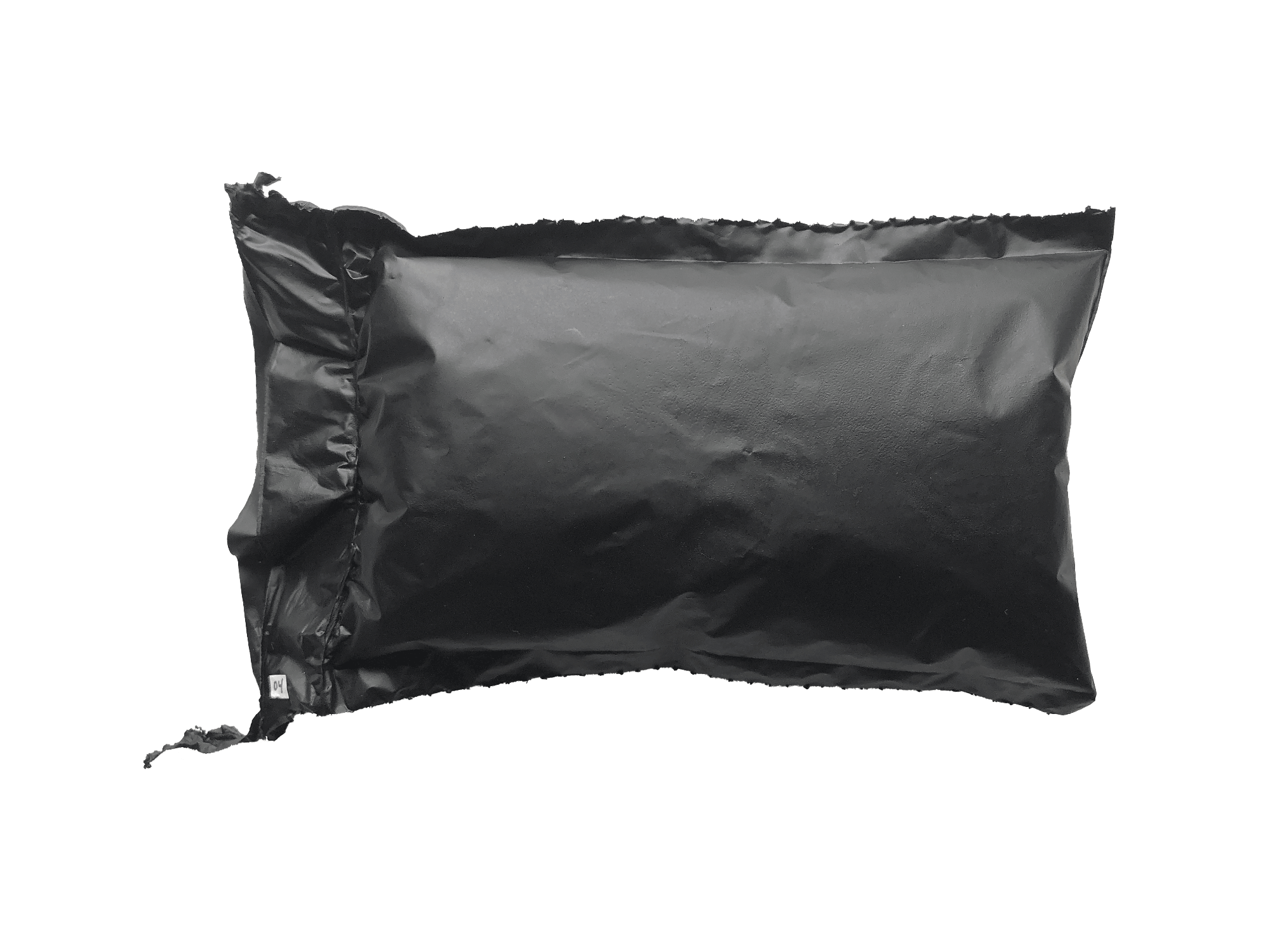VOID FILL
2020, never-ending
Black spray paint on plastic film air pillows
Dimensions variable
Void Fill is an industry term. In supply chain logistical worlds, “void fill” refers to packing materials that occupy empty spaces around products: the stuff between the corrugated shipping box and its contents.
Void fill dwells in the vacancies of global circulation. It derives from efficiency-driven mismatches between inventories of things and available standard containers.[*] Its sole purpose is to fill gaps around things to protect them in transit.
Void fill can take a variety of forms—packing peanuts, paper shred, crinkle paper, crumpled paper, Kraft paper, newsprint, tissue paper, paper padding, poly-foam, foam sheets, foam cushioning, foam pouches, bubble pouches, bubble wrap, and what is widely referred to as “the lightest void fill material on the market”: inflated air pillows.[•]
From where does the packaged air come?[º] How to track the fine print on thin plastic film back to the everywhere-and-nowhere divisions of multinational packaging systems solutions providers? Where do the trails of logistics supply chains lead? Trip up the scale and walk to the obfuscated edges of nothing. Peer through inflated fictions of transparency.[†]
Which spaces become designated voids to fill?[∞] Which spaces are regarded as empty, unoccupied, vacant, or wasted? Which dimensions are experienced as loss? (What is not void fill?) Void fill is always and already destination bound, traveling variable distances from here to there, occupying gaps between desire and fulfillment.

01 AIRplus, 203 x 127 mm
02 AirSpeed by Pregis, 200 x 200 mm
03 EarthAware, 203 x 102 mm
04 AirSpeed by Pregis, 200 x 130 mm
05 Sealed Air Fill-Air Extreme, 203 x 127 mm
06 Uline, 203 x 203 mm
07 AirSpace, 203 x 127 mm
08 IncrediSeal Advanced Air, 305 x 102 mm
09 Sealed Air Fill-Air Extreme, 254 x 203 mm
Void Fill was published in Issue One of The European Review of Books.







